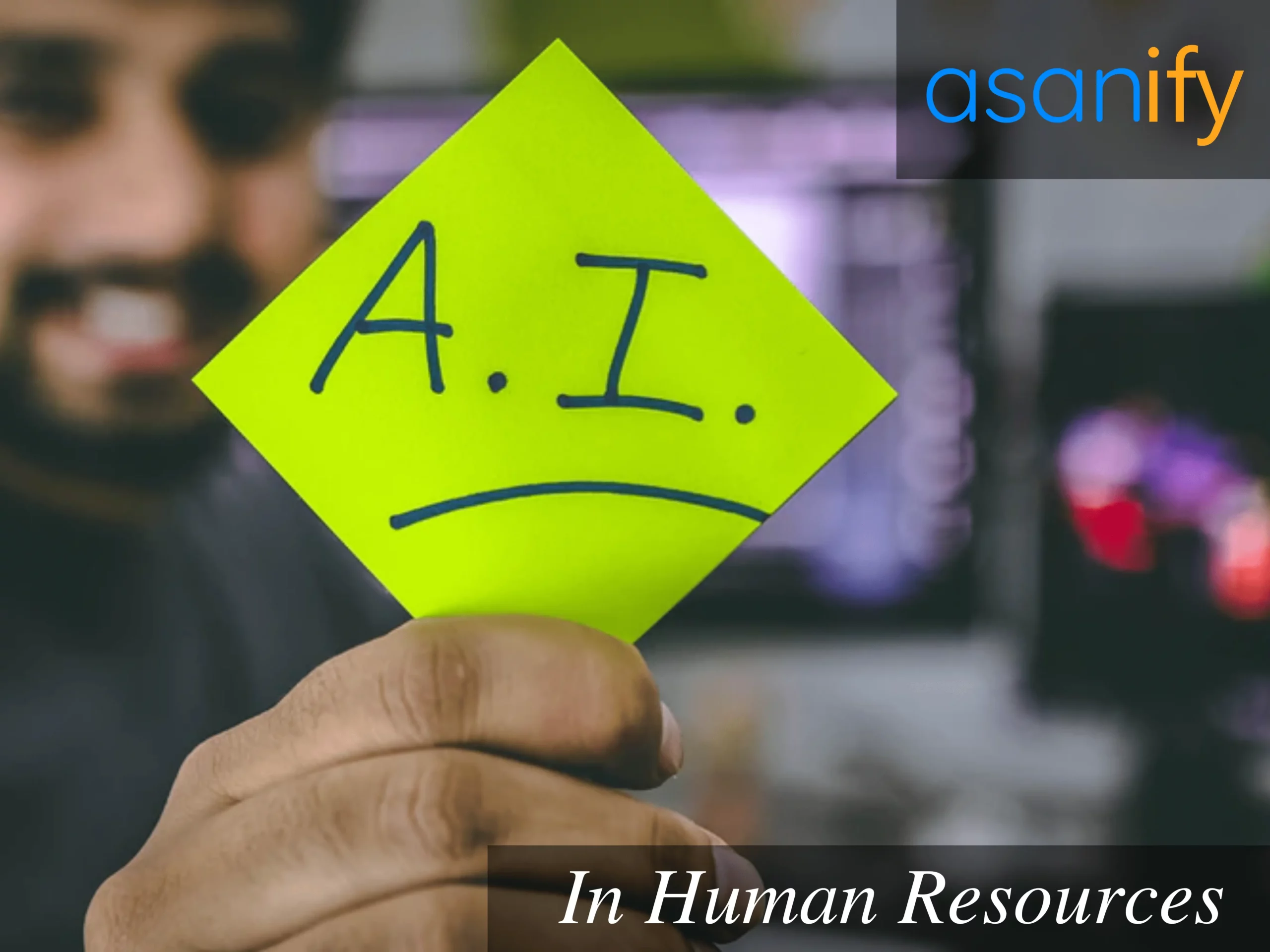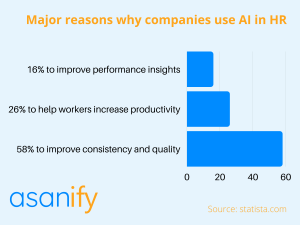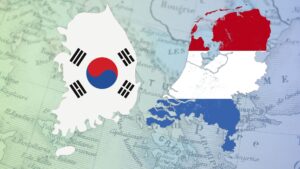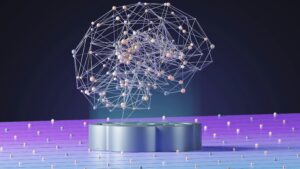Artificial Intelligence or AI is slowly taking over the way HR professionals work. The role of AI in HR is huge, be it in payroll management, talent acquisition, or even something as simple as responding to employee queries using chatbots. In a survey conducted by IBM, around 66% of company CEOs said that AI played a crucial role in driving higher value in Human Resource Management.
In this blog, my main focus will be to explain in detail how AI can be used to help make HRM more efficient. I will include the following points:
- What is AI in HR?
- How can AI help HR professionals shift from administrative to strategic work?
- Can AI be used to screen candidates for recruiting?
- How does AI help better an applicant’s experience during the hiring process?
- In what way can AI help in employee training and development?
- How to use AI to increase payroll management efficiency?
- How to improve performance management with the help of AI?
- Can AI be used to increase employee engagement and retention?
- Why does AI eliminate any potential human biases?
- Summary
- Conclusion
- FAQs
What is AI in HR?
Before I delve deeper into how AI can help HR, let me first explain to you what Artificial Intelligence is.
AI refers to any simulation of human intelligence in machines. These machines are programmed in such a way that they mimic human actions. Any application or software that exhibits traits that are associated with humans is characterized as Artificial Intelligence.
The integration of Artificial Intelligence in Human Resources practices helps organizations to work in an efficient and smooth manner. HR teams can make better decisions, eliminate any biases, and increase productivity within their organization.
How can AI help HR professionals shift from administrative to strategic work?
As an HR manager, you need to be able to make decisions for all the employees in your company. Is the business running smoothly? How well is the product team doing? How well (or not!!) is your competition doing? Once you have data regarding many such questions, only then will you be able to make well-informed decisions. But if you spend most of your time on the job performing admin-related tasks, there’s no time left to make strategic decisions for the betterment of the company. This is where AI comes into the picture.
Automate repetitive tasks
With the help of AI, you can automate lower value tasks, ones that are easily repeatable. This will lead to a reduction in administrative work. Hence, HR employees can focus on strategic decision making and innovation rather than be bogged down by menial tasks.
Help employees with cognitive decision making
To err is human, but AI works with data. While manually dealing with data pertaining to multiple teams and departments, it is only natural to make a mistake. But when this data is integrated with AI, you can formulate strategies and come up with innovative ideas to help your employees.
AI can help detect employees’ mood patterns and anxiety levels from their behaviour. By moderating employees phone calls with clients and from the tone of their voice during these calls, AI can provide you with the information you need to make a cognitive decision. HR managers can use this data to make informed, data-driven decisions about the welfare of their employees. Say, for example, a decision regarding how often members of a particular team need to take breaks.
Can AI be used to screen candidates for recruiting?
Thankfully the answer is to this question is YES! When you take your hiring process online, you can save time and energy. You can also ensure minimal or no errors at all. With the help of the right algorithm, you can even predict if a particular candidate would be the right fit for a job or not.
Smart digital application forms
Instead of making candidates manually fill out paper forms, get them to fill out online forms. With the help of online forms, you could also get candidates to attach soft copies of relevant documents. This will not only help you save time from going through the responses received but also help you save up space in your office. Think about the amount of paper you could save because of this!!
Screening through vast pools of candidates
As I mentioned previously, digital forms are the way to go. Here’s another reason why. Scanning through hard copies of numerous applications can become extremely tedious. By leveraging the power of AI, the task becomes a lot quicker and efficient.
Many applicants apply for the same job profile. Based on pre-set criteria, AI can scan through academic background, past experience etc., from a large pool of applicants and suggest candidates who display high potential. Apart from saving loads of time, you have also saved yourself from the possibility of shortlisting any wrong candidates.
Understanding employee referrals
Employee referrals are a company’s internal method of getting potential candidates for a job. Companies ask existing employees to recommend potential candidates from their individual networks. This helps managers get high-quality candidates in an easier, quicker way. But going through these referrals manually is no small feat. AI can scan through your employees’ recommendations as well to find potential candidates. Hence, new candidates can be found efficiently.
Reducing hiring costs
When you spend time on hiring candidates and manually going through each application one by one, there are higher chances for errors. These errors can lead to wrongful hiring, which can end up being extremely expensive.
Also, a faster and more efficient hiring process with the help of software can help you save time; and time is money.
How does AI help better an applicant’s experience during the hiring process?
Many recruiters tend to forget that while they are searching for the right candidate for the job, the candidate should also feel like the company is the right fit for them. The candidate is more likely to feel so when they experience a seamless and hassle-free selection process.
Better candidate experiences
From an applicant’s perspective, applying for any job can be very stressful. Especially when they have to wait days before they hear from their potential employer. However, with the help of chatbots, companies can pre-set responses for FAQs. Hence, candidates receive instant responses to their queries regarding any steps application process.
One very common error employers make is ghosting applicants if they aren’t selected instead of just telling them so. But with the help of chatbots, interviewers can provide feedback to help applicants for their future interviews if they aren’t selected. This would end the entire process on a positive note and hence a better candidate experience.
Onboarding
The stress doesn’t end once an applicant has been selected for a job. Any new employee worries about how they’d fit into an organization. If the onboarding process is streamlined, the overall experience is improved and stress-free. Chatbots can solve any query that comes their way in a jiffy and new employees feel welcome in an entirely new work environment.
Let us take, for example, sales onboarding. Sales onboarding is basically an informative training program for newly hired sales representatives. Providing new employees with an up to date curriculum and information about the target market. Integrating sales onboarding with AI can streamline it and make it pain-free.
In what way can AI help in employee training and development?
Training and development is a huge part of an HR managers role. This task can become especially tricky when you have huge departments and teams of people, all with different skillsets. With the help of Artificial Intelligence, you can give your employees…
A personalized learning experience with AI
Learning styles generally differ among individuals in an organization, based on their age, ethnicity, educational background etc. Such factors must be taken into consideration while planning training modules for employees. Also, personalize learning at such a large scale (to include all your employees) is almost impossible without AI. This process becomes simpler when integrated with AI. Employees are sent suggestions based on their individual goals and gaps in skillsets. The AI system can notify both mangers as well as employees about various opportunities in the company to develop the required skill sets.
Learning that is integrated with the routine workflow
Many employees can find it difficult to keep track of ongoing learning modules along with regular work. With an integrated system, employees can be notified when a new course is available for them to do. Employees can also be notified when its time to complete specific modules or courses. Modules are recommended based on the employee’s current ongoing projects or personal interest.
Take a look at the video below to see how we at Asanify enable learning through AI
Measure completion rates of modules
Managers can keep track of the level of performance of each employee within an organisation. Managers can also track the areas and skillsets employees need to build on. Analytics can provide clear information on the learning curve of employees and the progress they make on a day to day basis.
How does AI increase payroll management efficiency?
In short, payroll management includes everything that revolves around the company’s employees’ finances. It includes everything right from salaries, compensations, deductions, bonuses etc. I know, it sounds really stressful for one department to keep track of and manage all the employees’ payrolls. That’s because IT IS!!!
So how does a team of people manage all of this efficiently, with zero errors?
Reduced errors
We know that payroll management in any organization calls for zero errors, complete accuracy as well as streamlined processes. This is also a sub-function of HR which can prove to be the most tedious and stress-inducing. By integrating your payroll management with AI, you can help overcome payroll anomalies, with the help of the various algorithms and hence reduce human errors.
Standardized compensations and benefits
AI can integrate information from various departments like finance, marketing etc. As a result, you can easily analyze pay trends across the firm. This facilitates informed decision making regarding bonuses as well as recruitment and business expansion. With the help of AI, the HR team will also be able to set rules for standardized compensations, bonuses and benefits. Setting insightful benchmarks can motivate and encourage employees to meet given expectations better.
How to improve performance management with the help of AI?
Performance management is extremely important for any business. It helps align a company’s management, employees, resources and systems to strategically meet the required objectives and needs. Lack of efficient performance management can lead to wastage of resources both human and capital. So how does AI help with this?
Continuous performance analytics
With the help of AI, it becomes very easy to keep track of the work done by employees. Right from productivity levels, leave days etc., it all becomes very transparent. As a result, there is potential for constant performance tracking. Thus, employees are more accountable. Therefore, they perform better and keep their productivity levels high.
Especially now, while a lot of people are still working from home. Performance analytics will not only help you keep track of your employees’ productivity but also give you the insights necessary to provide adequate motivation to work from home.
Real-time feedback methodologies
Very often, things get lost in the process of waiting for the end of the week or month for a formal feedback session. But feedback is the most efficient when it is done on the spot so that employees can immediately rectify errors and learn from them. With the help of AI, managers can give an instantaneous assessment of the work done by team members.
This process can also take place the other way around. Meaning, employees and team members give their bosses real-time feedback or respond to any assessment. Hence, both managers as well as employees will be able to keep track of feedback and areas of improvement.
Workforce Analytics
Workforce analytics comprises data and tools that talk about characterized and organized employee data. This data gives a detailed analysis of which people are better at their jobs and helps get an overall better understanding of performance management.
Workforce analytics can be divided into two-
Predictive analytics helps HR managers and company leadership in understanding which employees are most likely to leave the organisation or which employees display potential.
Prescriptive analysis prescribes actions to the HR managers, regarding how to retain top employees, based on data that was brought out in the predictive analysis.
How can AI increase employee engagement and retention?
Simply put, engaged employees are a whole lot less likely to leave your organization.
Did you know that 87% of engaged employees are less likely to leave their employer? How do you engage employees by leveraging Artificial Intelligence? Read on…
Use of chatbots for instant query resolution
Many companies use chatbots to resolve customer queries. It is essentially a robot programmed to speak with you and resolve your queries. Why not do the same for your employees? The use of HR chatbots is on the rise. When an employee’s query gets resolved quickly, they will be able to focus on their job better. Hence leading to higher job satisfaction as well as productivity.
Surveys to understand employee insights
Ever wondered what makes employees feel satisfied with their job? Why do some employees love their job while others aren’t as motivated? Well, you should just ask your employees!! Yes, surveys are still the best way to know how your employees feel about their job and the company. It makes them feel heard. With the correct software and questions, this technique can really prove to be invaluable.
Retention
While talent acquisition is not easy, 60% of managers consider employee retention a bigger challenge. With the help of AI, you could get notified when an employee is planning to leave your organization. this is done with the help of predictive analytics (as I mentioned while speaking about workforce analytics). This will help you come up with innovative ways to retain the employees better, especially the good ones.
Eliminate potential human bias
There is a growing concern about the potential biases that could occur even in the use of AI, even in big companies like Google. But the deeprooted source of this issue lies in the fact that AI mimics human behaviour. If the data set used to train the algorithm is biased, then it will mirror those biases as well.
Hiring bias
In the hiring process, very often hundreds of applicants apply for a single role. When there are multiple roles available, this multiplies into thousands of applicants. Very often recruiters tend to review only around 20% of these applicants, majorly those coming in from top colleges. But these applications tend to lack diversity. Apart from this, other candidates who could have great potential get left out. When integrated with AI, such problems are dealt with. Automation can make this entire process ethical and fair.
But this isn’t the only place where bias could occur.
Candidates invited for job applications could be a skewed set
YES, the candidates you invite for any job application in itself could be a skewed set. The terminology used in the job descriptions plays a huge role in causing this skew. It could discourage a certain group of applicants from applying for the job altogether. Such issues can only be solved when biases within companies are removed. What biases within a company you may ask? Did you know that 70% of amazons managerial roles are filled with male employees?
There is a need to make hiring truly unbiased
It is necessary to ensure that the training data for algorithms is completely bias-free so that the AI, in turn, could be used to help HR managers make unbiased decisions. The key is to overcome traits such as experience and qualification only and focus on pure talent as well. There needs to be an update in these regulations to truly encourage equal opportunity in hiring and allow for the use of algorithmic recruiting systems that meet clear criteria. Only then will the hiring process be ethical and fair in the true sense.
Performance appraisal bias
It is natural for humans to connect with people who are similar to them. So, reviews that are filled in manually tend to reflect these human emotions and connections. Members of the senior management may lean towards giving people who belong to particular ethnic or geographical backgrounds more preferences etc.
People tend to form an unconscious language bias, where the words people use indicate preferences.
However, AI completely avoids such biases, while giving objective performance analytics
Summary
To briefly summarize this blog, AI in HR can be used to

- Automate repetitive tasks
- Enable HR managers to make cognitive decisions
- Use smart, digital application forms for hiring candidates
- Screen through hundreds or thousands of applicants quickly
- Better understand employee referrals
- Reduce the cost of hiring
- Offer better experiences to the candidates
- Onboarding process streamlined
- Provide employees with personalized learning opportunities
- Integrate learning with regular office workflow
- Measure employees completion rates of learning modules
- Reduced errors in payroll management
- Standardized compensations and benefits
- Continuous performance analytics
- Real-time feedback methodologies
- Workforce analytics
- Chatbots for instant query resolution
- Surveys to understand employee insights
- Increased employee retention
- Eliminating Human biases in Hiring
- Reducing performance appraisal bias
Conclusion
AI is used everywhere. But what also becomes necessary is keeping up with the ever-changing trends in the world of AI, and ensuring that you as an HR manager are able to use this AI optimally to benefit your employees.
It is also one of the most effective ways to boost productivity, save time and ensure the most optimum use of available resources. Click here to get in touch with us at Asanify and let us know how we can help you help our employees have a better job experience!
FAQs
Some of the benefits of integrating your companies HR with AI are mentioned below
1. Reduced errors
2. Enables data driven-decision making
3. No human or psychological biases
4. Chatbots that are always available for query resolution
5. Does the ‘boring’ repetitive tasks for you
The answer to this is both Yes and No. HR as a function is slowly moving away from an administrative job, to a more strategic, innovation-driven job.
Hence, AI will eventually take over specific administrative jobs within HR, like shortlisting applicants, performance management etc. But AI cannot take over the HR function in its entirety. At the end of the day, it is human resources, and human beings will continue to be a major part of the decision-making process for the human resources of any company.
While AI cannot completely replace recruiters, it sure can make their work a lot easier. AI can help managers shortlist candidates, but the final decision lies in the hands of the management of a company. Besides, before any manger decides to recruit and spend money on any candidate, they should have had a detailed conversation with the candidate to ensure that the candidate is responsible enough to take the job.
HRI, also known as Human resource intelligence is a new way of looking at HR as a function. It focuses on the ‘intelligence’ aspect of HR that deals with delicate and high-risk decision making processes on a daily basis. HRI broadly deals with 4 sub-roles i.e. Resource management and efficiency, Recruitment and workforce organization, Learning and Development and finally Ethics, grievances and discipline.
Not to be considered as tax, legal, financial or HR advice. Regulations change over time so please consult a lawyer, accountant or Labour Law expert for specific guidance.






